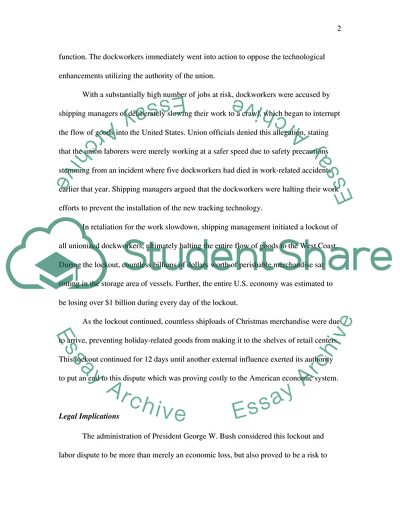Cite this document
(West Coast Dockworkers Oppose Technological Upgrades Case Study Example | Topics and Well Written Essays - 1250 words, n.d.)
West Coast Dockworkers Oppose Technological Upgrades Case Study Example | Topics and Well Written Essays - 1250 words. https://studentshare.org/sociology/1705234-pick-a-labor-dispute
West Coast Dockworkers Oppose Technological Upgrades Case Study Example | Topics and Well Written Essays - 1250 words. https://studentshare.org/sociology/1705234-pick-a-labor-dispute
(West Coast Dockworkers Oppose Technological Upgrades Case Study Example | Topics and Well Written Essays - 1250 Words)
West Coast Dockworkers Oppose Technological Upgrades Case Study Example | Topics and Well Written Essays - 1250 Words. https://studentshare.org/sociology/1705234-pick-a-labor-dispute.
West Coast Dockworkers Oppose Technological Upgrades Case Study Example | Topics and Well Written Essays - 1250 Words. https://studentshare.org/sociology/1705234-pick-a-labor-dispute.
“West Coast Dockworkers Oppose Technological Upgrades Case Study Example | Topics and Well Written Essays - 1250 Words”. https://studentshare.org/sociology/1705234-pick-a-labor-dispute.


